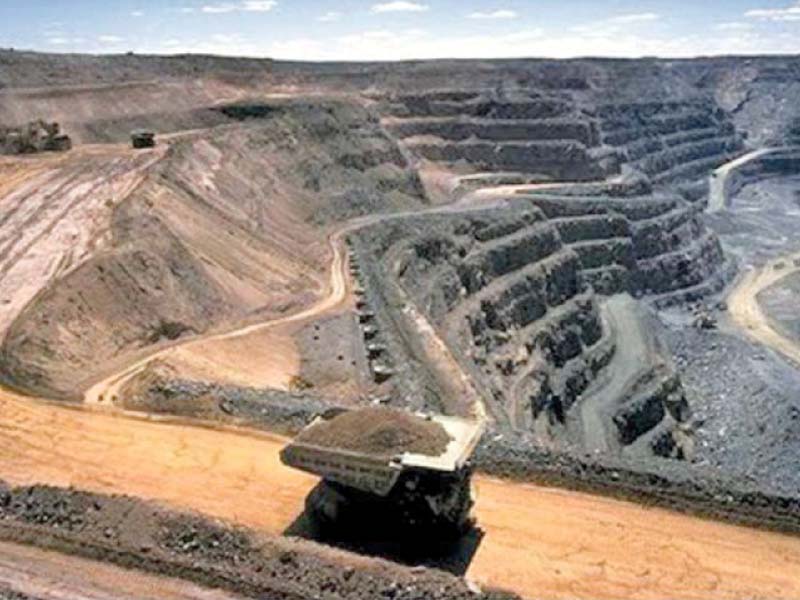
The Sindh Engro Coal Mining Company’s (SECMC) $2-billion coal mining and power generation project achieved financial close in April this year. The company is under obligation to begin the supply of 660 megawatts of electricity to the national grid by June, 2019.
Two Thar coal-based power projects approved
However, the delay in disposal of the SHC case or a judgment considered unfavourable by the company will adversely affect the project, said Shamsuddin Shaikh, CEO of SECMC while responding to a query.
The company will have to rely on the import of 10,000 tons per day of expensive coal to generate 660MW if mining in Thar starts beyond the slated time.
Around 3.8 million tons per annum coal will be extracted from Thar for generation of 660MW of electricity. The cost of mining component of the project is $845 million, with 75 percent debt financing, while that of the power generation is $1.1 billion, which also includes 75% loan.
Shaikh gave a detailed briefing to the media in Hyderabad on Saturday about the project, its current status as well as concerns of the local people about employment, resettlement and environment.
The project needs two reservoirs for disposal of underground water from the coalfield through a 37.5-kilometre long pipeline of 50 cusecs capacity. But it is facing impediments at both sites. One of the sites, Dukkur Cho near the Indian border, is a declared Ramsar site with an international convention barring any activity that affects the environment.
Ghorano, the other site in a village in Islamkot taluka whose 1,400 acres land is required to build the reservoir for disposal of highly brackish subsoil water from the coalfield, has emerged as another stumbling block.
Some residents of the village filed a petition in the SHC Hyderabad Circuit Bench in June this year, pleading that the reservoir, which the petitioner dubbed as a ‘dam’, would affect their livelihood, land, livestock and environment. More interestingly, the Sindh Coal Authority (SCA), which has over 50 percent stake in the SECMC, submitted in the court during a hearing in August that it has not approved Ghorano site for the reservoir.
Thar coal project: Dam will destroy our livelihoods, claim locals
Shaikh, meanwhile, asserted that the SCA has approved the Ghorano site for the storage facility and handed over its construction to SECMC. The SCA was itself building the reservoir and 37.5 km pipeline at Dukkur Cho.
Shaikh, meanwhile, asserted that the SCA has approved the Ghorano site for the storage facility and handed over its construction to SECMC. The SCA was itself building the reservoir and 37.5 km pipeline at Dukkur Cho. “We have started the geotechnical study of the sand dunes but no construction works had started as yet,” he told.
According to him, the Sindh Environment Protection Agency (SEPA) carried out an Environmental Impact Assessment (EIA) on both sites and approved the reservoirs with certain conditions.
Shaikh appreciated cooperation of both the federal and Sindh governments of Pakistan Muslim League-Nawaz and Pakistan Peoples Party. However, answering a question, he clarified that power generation will not start before the next general elections in 2018. “We have a lot of pressure from the federal government to complete the project [before elections]. Yesterday, I met the chief minister Sindh [Syed Murad Ali Shah]. He also asked to put it on the fast track.”
Employment
The CEO informed that by 2019, when power generation starts, the company’s staff will surge to around 5,000 from the present strength of 2,028. Responding to criticism about denying employment opportunity to the local people, he told that among the existing staff, 997 employees are from Thar, 647 are Chinese and 384 from other parts of Sindh and Pakistan.
The Sindh government has directed the company to provide 50 percent of the total jobs to local people. He informed that the company was providing free training to the locals for semi-skilled and unskilled jobs.
Amir Khan visits Thar, pledges to build water wells in area
Resettlement
Some 1,508 people in 202 households of village Thariyo Halepoto and 860 people in 128 households of village Senhri Dars will be resettled around 9 kilometers away in as many new villages. The former village is spread on 209 acres and the latter on 167 acres. The people of Senhri Dars will be shifted to their new village by 2018 and those of Thariyo Halepoto by 2023.
“The company will establish new villages for these people on the same area of land, with new houses built in rural style, pastures for grazing and land for cultivation,” the CEO said, adding that the company will bear all the expenses for the relocation.
Published in The Express Tribune, September 4th, 2016.
Like Business on Facebook, follow @TribuneBiz on Twitter to stay informed and join in the conversation.

1737706680-1/emilia-perez-(2)1737706680-1-165x106.webp)






1736251113-0/Express-Tribune---News-Desk-(3)1736251113-0-270x192.webp)














COMMENTS (3)
Comments are moderated and generally will be posted if they are on-topic and not abusive.
For more information, please see our Comments FAQ